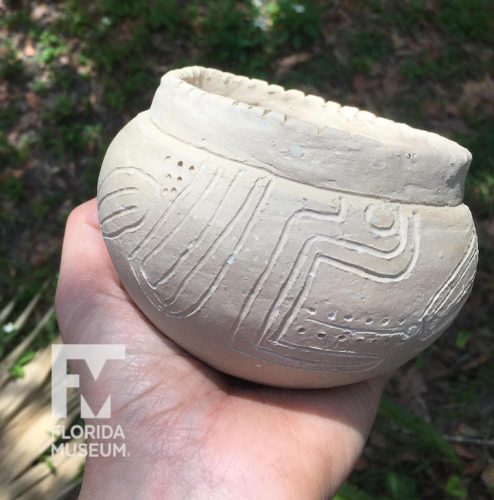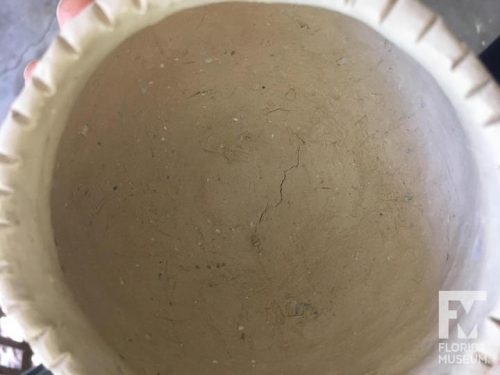For most of the pots I’ve made during these quarantimes, I’ve used clays more or less as they were. This time, I wanted to try adding a temper. Temper is something mixed into clay to improve how it works, either as the pot is built or for its intended use. Sand is one of the most common tempers, but it’s naturally present in most clays in Florida already. During the Mississippian Period, potters in the Florida Panhandle and west along the Gulf Coast began burning and crushing mussel and clam shells to create a pottery temper. The shell looks like little plates in cross-section. Or sometimes, if the pottery has been buried in an acidic environment, all the shell has dissolved, leaving voids in the characteristic shape.
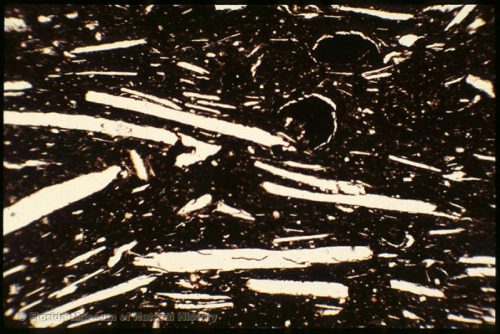
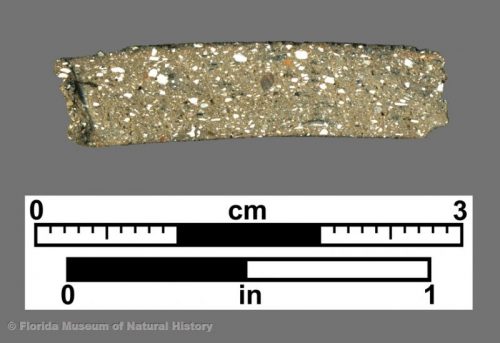
Pensacola Incised, ca. 1000 years ago
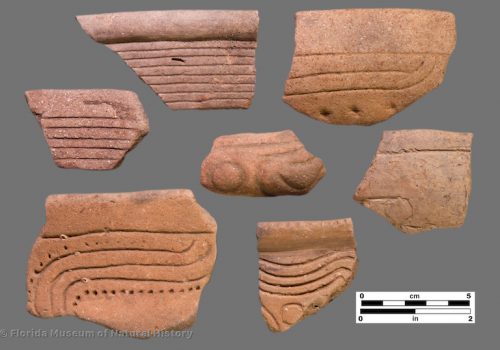
I started my Pensacola Incised pot with clay that was sent to us from Mobile, Alabama. It arrived in big dry chunks. I rehydrated it with water and let it sit for a a few days. Once it had firmed up into a mass, I tried working with it. It felt silty and dried out very quickly in my hands. This meant that it had a significant amount of non-clay particles in it, and I would have to be careful about cracking.
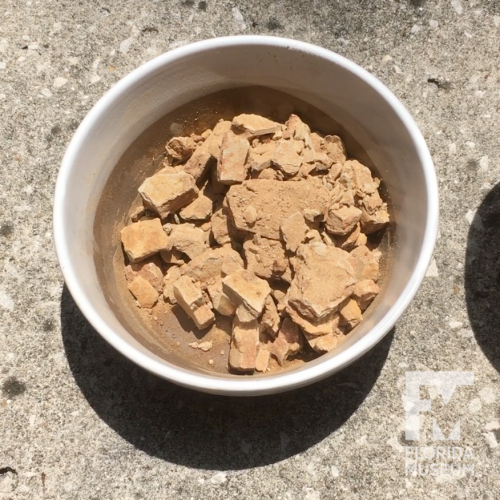
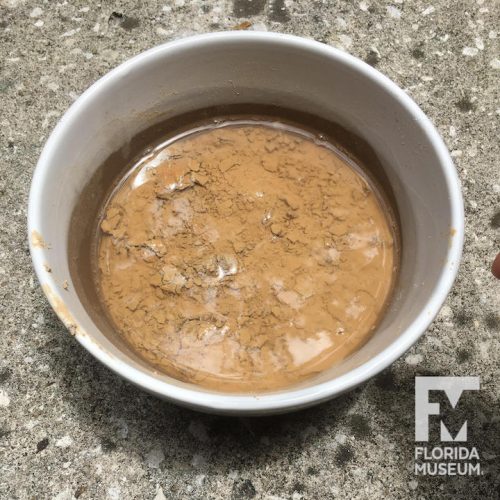
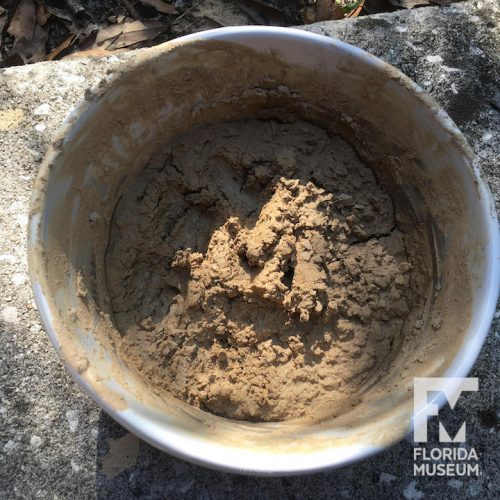
I added water regularly to keep it pliable, and mixed in a handful of burned crushed shell. As I worked to blend the shell in, I could feel the sharp pieces pricking my hands. They stung for several hours afterwards.
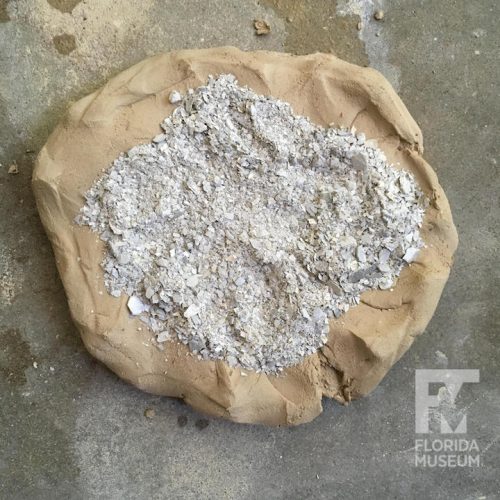
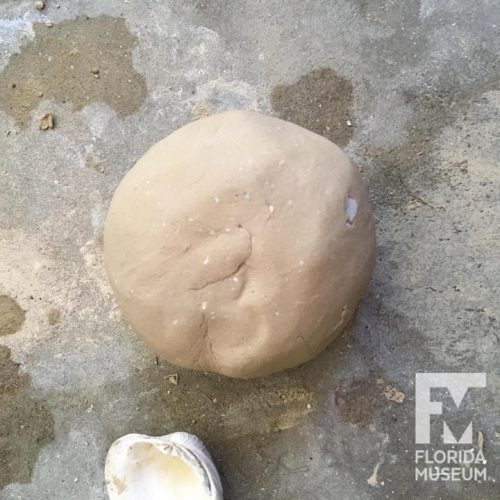
Many of the Pensacola Incised vessels are bowls, so I began to make one using the coil method. For inspiration, I looked at some of the pictures illustrated in the writings of C. B. Moore and Gordon Willey. I realized about halfway through that I hadn’t gotten the shape right, and should have made it a wider, more open bowl, but by that time I didn’t want to start over. I ended up with more of a jar.
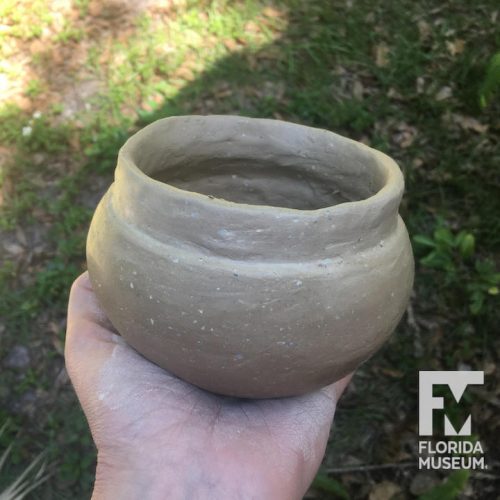
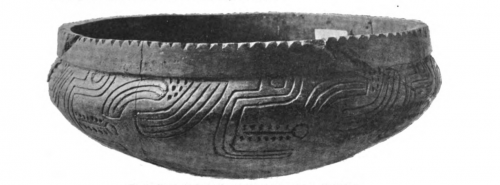
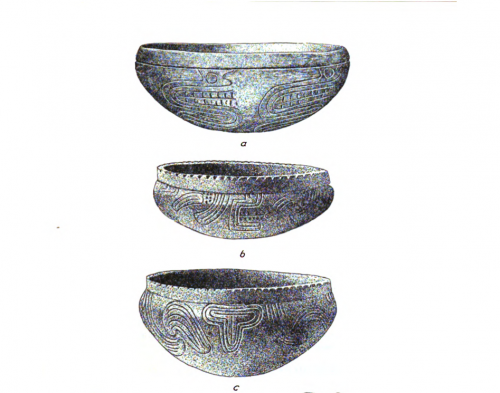
After a night firming up, I did a little more paddling to refine the shape, and then incised the decoration with my shark’s tooth. I copied an animal design from one of the vessels depicted by C. B. Moore and Gordon Willey. The notches on the rim were the finishing touch. It’s been a few days since I made this one, and I’ve noticed the start of a crack on the base. It is likely due to uneven drying, with the breezy days we’ve been having here in Gainesville. If I’m lucky, the crack won’t go all the way through.
